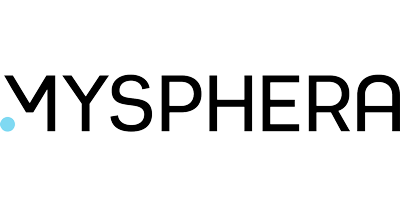MYSPHERA, was founded in 2012 with the goal of improving healthcare by developing a powerful platform to create breakthrough solutions. They are now a leading health technology company in Europe, with deployments in more than 50 hospitals, and strategic and technology partnerships throughout the world. MYSPHERA is focused on optimizing efficiencies, lowering operating costs, increasing reliability and safety, and improving patient outcomes.
One of the key metrics in MYSPHERA’s mission to transform healthcare systems is in the collation of data and development of predictive models to estimate the future Length of Stay for each patient.
The Challenge.
Length of Stay is not a transferable metric between hospitals. It can be impacted by a wide range of factors such as illness types, treatment approaches, hospital practices & process etc. The differentiation of factors does not detract from the need for reliable Length of Stay data.
“Being able to understand what drives longer or shorter LOS and then being able to predict it on a patient level is hugely beneficial in managing healthcare units…It allows for better planning of bed occupancy in the short term but it also allows to adjust the treatment approach. ”
Jordi Rovira, UK Technical Lead, MYSPHERA.
The problem faced by MYSPHERA related to the quality of data being received. The teams were increasingly faced with disorganized & inconsistent data relating to medical histories from inside and outside the hospital, sensor signals, appointment data, detailed records for medical procedures and more. Even when the data was tidied and refined, it was not predictive and could not be applied easily to build the predictive models required by MYSPHERA.
“The data wasn’t in the ‘predictive’ format. It would take us weeks to reshape it to the required form. Every new data source would add up to this effort. We did not have time for this,“
Jordi Rovira
The Action.
Ger Harte, CTO of Xpanse explains, “Xpanse AI was built to deliver Predictive Models on raw transactions, events and other signals. Healthcare records fit that framework perfectly.” The process was simple; MYSPHERA connected their database to Xpanse AI where the raw and messy data was processed to develop the predictive models required.
Instead of waiting weeks for data that was inconsistent, unusable and unpredictable, Xpanse AI was able to generate MYSPHERA’s first predictive model within less than an hour.
“It was very surprising. All the data wrangling necessary to reshape the data to the predictive format was executed by the machine. Finally, we were getting somewhere!”
Jordi Rovira
The Benefit.
MYSPHERA became able to quickly build predictive models for determining patient Length of Stay. The impact of this operational efficiency was a radical improvement in managing resources and driving cost-effectiveness.
Resourceful savings found through working with Xpanse AI make businesses like MYSPHERA more cost-effective, and ultimately in a stronger position to drive competition in their industry either through passing on competitive savings to their customers or by reinvesting and driving further innovation.
Going Beyond the Expected.
One of the key benefits of working with existing data sets in Xpanse AI is that the effort to build new models is negligible, so MYSPHERA started iterating with more granular approaches, building separate models for patients arriving at an A&E unit, another for elective procedures, another for childbirths etc.
“It took us a while to bring the data into one database just to discover that for Data Science it’s only a starting point for a very long project. We contacted several Machine Learning vendors and they were not able to help us.… It’s incredible to get the insight and the models practically effortlessly. The data quality at source is still a burning problem in healthcare but once that’s resolved – we get the models within few hours,”
Jordi Rovira





